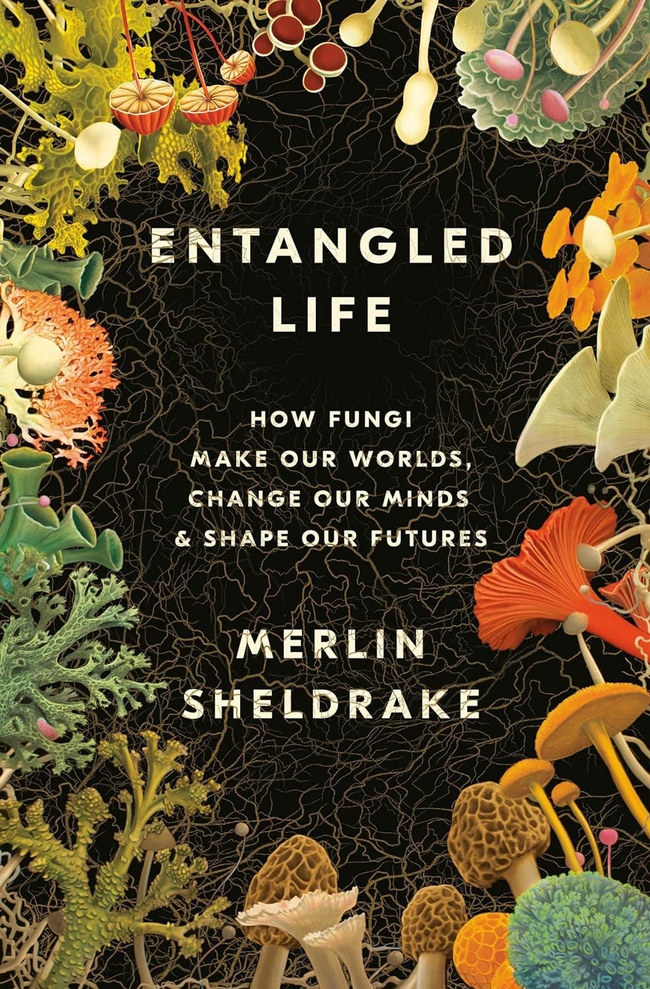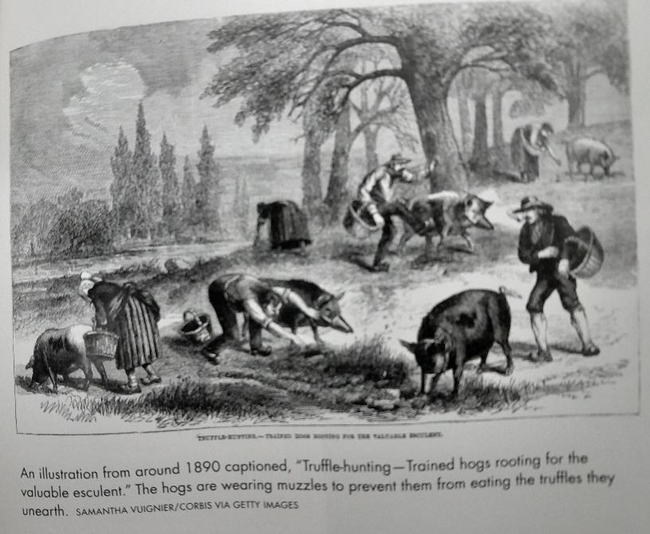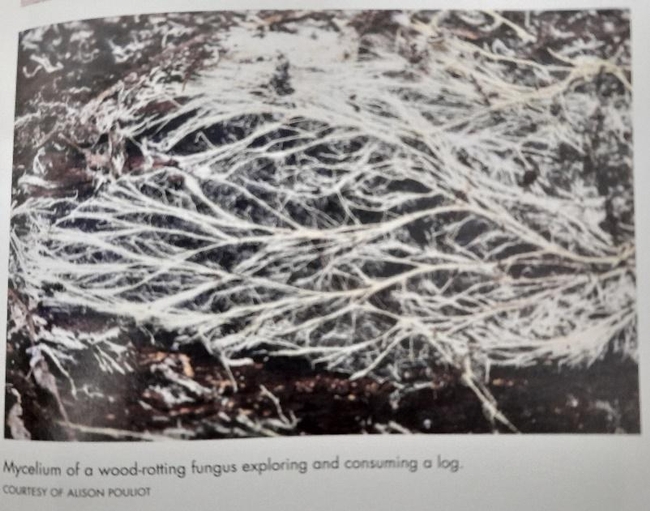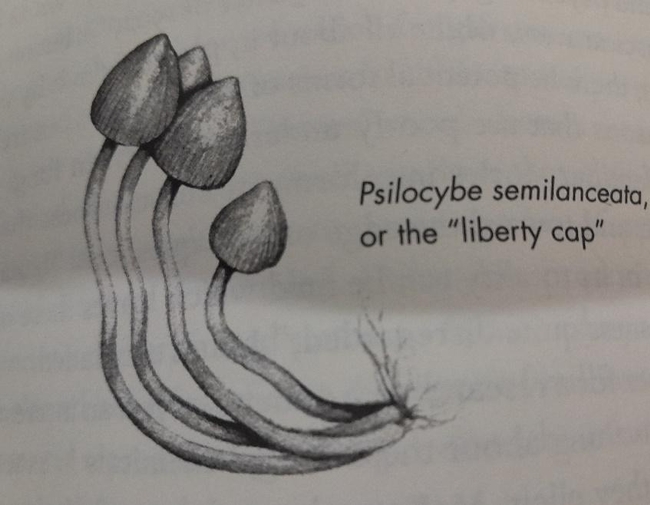“Entangled Life:
How Fungi Make Our World, Change Our Minds & Shape Our Futures”
Merlin Sheldrake. New York: Random House, 2022.
The California Master Gardener Handbook (2015) introduces us to fungus in chapter six, which is titled “plant pathology.” It admonishes, “Fungus is the single most important cause of plant disease” (p. 151). 
The author of “Entangled Life: How Fungi Make Our Worlds, Change Our Minds & Shape Our Future,” Merlin Sheldrake, holds a doctorate in tropical ecology from Cambridge and did his Smithsonian predoctoral research fellowship in the rain forests of Panama.
The “Entangled Life” is organized around an Introduction: What is It Like to Be A Fungus? followed by a handful of chapters covering information like:
Chapter one—Mycology primer
Chapter two—Mycelium the interconnectedness of reality/life
Chapter three—The intimacy of strangers, fungus plus alga = lichen
Chapter four—Mycelial minds, magic mushroom
Chapter five—Plants + fungus = healthy soil
Chapter six—The Wood Wide Web: subterranean communication, transportation
Chapter seven—Fungus as our environmental savior?
Chapter eight—Yeast = bread v. brew
Who should look at this book (if only for the great photographs)? Mycology hobbyists? Master gardeners? Environmentalists? Or if preparing for Jeopardy, “Entangled Life” should help if the category is astrobiology, e.g,:
Who coined the term “ecology”? Biologist Ernest Haeckel 1866 (p. 71)
Who coined the term “symbiosis” Botanist Albert Frank 1877 (p. 73)
What is the meaning of “entheogen”? A substance that elicits experience of the divine within (p. 94)
What is the definition of “periderm”? Bark (p. 273)
A factoid sampler from “Entangled Life”:
- Fungus is the largest living structure on earth. (p. 4). A fungus found in Michigan covered 180 acres and weighed 44 tons.
- 93% of plants are “mycorrhizal,” that is, dependent on the relationship between fungus and roots.
- Fungus plus alga makes lichen, which is the primer for soil formation. “The most valuable possession on earth is soil fertility” (p. 143).
- Alga manufactures its food by converting sunlight to fuel (photosynthesis), while fungus is an ultimate explorer/scavenger. It lives upon (“eats”) dead decaying matter, and is therefore a “saprophyte.”
- Half of global agriculture is dependent upon pollination.
- Fungus creates antibodies to the varroa mite, which is the main cause of bee colony collapse.
- There are eight (8) times more species of fungus than species of plants (p. 10).
- The relationship between fungus (mykos) and plant roots (rhiza) is a great example of how the ecosystem works (p. 12).
- Mycorrhizal substance is ? to ½ of living soil mass.
- Plants are the evolutionary consequence of the fungus/alga merger (p. 128).
- Fungus extracts nitrogen/phosphorus from soil, delivering it to plants thru roots. Meanwhile, plants deliver sugar/lipids to the fungus. It is a reciprocal, mutually beneficial arrangement (symbiosis).
- Fungus is composed of tubular threadlike structures (hyphae) conveying liquid. Fungus is bundled together in a web-like mesh network (mycelium).

- A malaria vaccine has been extracted from fungus (p. 277).
- Different species of fungus can decompose debris, including dirty diapers (15% of our solid waste reducing its mass by 80%), cigarette butts (the most common litter on the earth, p. 182) and polyurethane (plastic).
Book Quotables:
- “Fungus can save the world”—American mycologist Peter Stamet (p. 183)
- “Life is a process rather than a thing”—John Haldane (p. 243)
- “Everything in nature is hitched to everything else”—John Muir (p. 270)
- “All organisms are connected like a mesh net”—Alex von Humboldt
- “It's impossible to do science without metaphor”—evolutionary biologist Robert Lewontin (p. 211)
- “Life is composition and decomposition” (p. 224).
- “Collaboration is sharing of resources for mutual benefit” (p. 215)
- “Fungus (yeast) is why humans developed from hunter/gatherers to farmers, a cultural transformation from nomad to stationary”—anthropologist Levi Strauss (p. 203)
- “Yeast is key to bread and brew.”
- “60% of the living organisms on earth are its three trillion trees” (p. 177). This invites the sobriquet “wood wide web”?
- Fungus is a great metaphor for life. It keeps changing and moving along. “The you of five years ago is made of different stuff than the you of today” (p. 53).
- Fungus is pretty “intelligent,” especially “If IQ is based upon how efficient one becomes doing what needs be done to survive” (p. 65).
- Fungus bioluminescence or “foxfire” invites insects to visit in the dark, therein helping to spread its spores (p. 49).
- Diversity of assets is a hedge against misfortune. “Fungus in adopting a mycelial network can both branch and fuse as needed” (p. 35). Fungus is capable of turning outward (evolution) and turning inward (involution) in the course of aging (p. 142).
- Collaboration with others may be key to success. Mutual benefit (symbiosis) is derived by merging. Fungus alignment with alga to form lichen creates an opportunity for both photosynthesis and non-photosynthesis survival. Life is both composition and decomposition (p. 224).
- Fungus receives a tiny fraction of the attention given to plants, but it's a valuable survivor that ingests decaying matter (saprophyte), and fungus is a poster child organism for recycling (“mycoremediation”) in the 21st century.
In short, fungus is a mystery that may be “good” or “bad” depending on your outlook. It grows, it spreads, it helps, it destroys. Even though it is often seen and discussed with a pejorative outlook, it might be helping us more than we realize.

